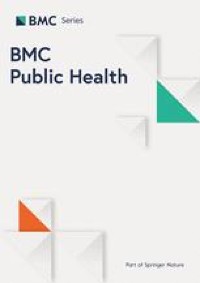Background Cannabis poisonings among children are of public health concern. Existing evidence from the US and from four provinces in Canada (Quebec, Ontario, Alberta, British Columbia) indicate an increase in pediatric cannabis-related poisonings since the legalization of cannabis. This study evaluates trends in cannabis-related poisoning pediatric emergency department (ED) visits and hospitalizations in Canada and addresses a gap in literature by describing trends and context around cannabis edible-related poisoning cases using data from a Canadian sentinel surveillance system. Methods Mixed-methods using data from two administrative data sources and one injury/poisoning sentinel surveillance system to estimate age-specific rates of cannabis-related poisonings ED visits (Ontario and Alberta), edible-related events (sentinel surveillance Canada), and hospitalizations (Canada with the exception of Quebec) among children between the ages of 0 to 11 from 2015/2016 to 2021. Annual absolute changes were calculated to quantify the magnitude of change between each age-specific rate. Joinpoint regression was used for trend analysis. A thematic analysis was completed to gain a better understanding of cannabis edible-related poisoning cases in the ED. Results The pediatric age-specific rates for cannabis-related poisoning ED visits (average annual percent change (AAPC) Ontario: 98.2%, 95% CI: 79.1, 119.2; AAPC Alberta: 57.4%, 95% CI: 36.7, 81.2), hospitalizations (AAPC: 63.4%, 95% CI: 42.0, 87.9) and cannabis edible-related events (AAPC: 122.8%, 95% CI: 64.0, 202.6) increased significantly from 2015 to 2021. Almost half of all pediatric edible-related events involved gummy edible products (48.8%, n = 143). Based on the thematic analysis, 88% cannabis edible-related events were attributed to inadvertent ingestion due to access to such products or lack of safe storage practices. Conclusion Age-specific rates of cannabis-related poisoning ED visits (Ontario and Alberta) and hospitalizations (Canada with the exception of Quebec) have increased since cannabis legalization, with the largest increase in rates occurring from 2019 to 2020. A similar increase in the rate of cannabis edible-related cases from sentinel surveillance data underscores the importance of monitoring this outcome. Public health messaging and national public health promotion strategies targeted towards raising awareness on the risks associated with consuming illegal cannabis and safe storage of cannabis could help mitigate cannabis poisonings among children. Read More MARIJUANA CANNABIS DATING LOVE SEX
Trends in cannabis-related emergency department visits and hospitalizations among children aged 0–11 years in Canada from 2015 to 2021: spotlight on cannabis edibles

Background Cannabis poisonings among children are of public health concern. Existing evidence from the US and from four provinces in Canada (Quebec, Ontario, Alberta, British Columbia) indicate an increase in pediatric cannabis-related poisonings since the legalization of cannabis. This study evaluates trends in cannabis-related poisoning pediatric emergency department (ED) visits and hospitalizations in Canada and addresses a gap in literature by describing trends and context around cannabis edible-related poisoning cases using data from a Canadian sentinel surveillance system. Methods Mixed-methods using data from two administrative data sources and one injury/poisoning sentinel surveillance system to estimate age-specific rates of cannabis-related poisonings ED visits (Ontario and Alberta), edible-related events (sentinel surveillance Canada), and hospitalizations (Canada with the exception of Quebec) among children between the ages of 0 to 11 from 2015/2016 to 2021. Annual absolute changes were calculated to quantify the magnitude of change between each age-specific rate. Joinpoint regression was used for trend analysis. A thematic analysis was completed to gain a better understanding of cannabis edible-related poisoning cases in the ED. Results The pediatric age-specific rates for cannabis-related poisoning ED visits (average annual percent change (AAPC) Ontario: 98.2%, 95% CI: 79.1, 119.2; AAPC Alberta: 57.4%, 95% CI: 36.7, 81.2), hospitalizations (AAPC: 63.4%, 95% CI: 42.0, 87.9) and cannabis edible-related events (AAPC: 122.8%, 95% CI: 64.0, 202.6) increased significantly from 2015 to 2021. Almost half of all pediatric edible-related events involved gummy edible products (48.8%, n = 143). Based on the thematic analysis, 88% cannabis edible-related events were attributed to inadvertent ingestion due to access to such products or lack of safe storage practices. Conclusion Age-specific rates of cannabis-related poisoning ED visits (Ontario and Alberta) and hospitalizations (Canada with the exception of Quebec) have increased since cannabis legalization, with the largest increase in rates occurring from 2019 to 2020. A similar increase in the rate of cannabis edible-related cases from sentinel surveillance data underscores the importance of monitoring this outcome. Public health messaging and national public health promotion strategies targeted towards raising awareness on the risks associated with consuming illegal cannabis and safe storage of cannabis could help mitigate cannabis poisonings among children.

